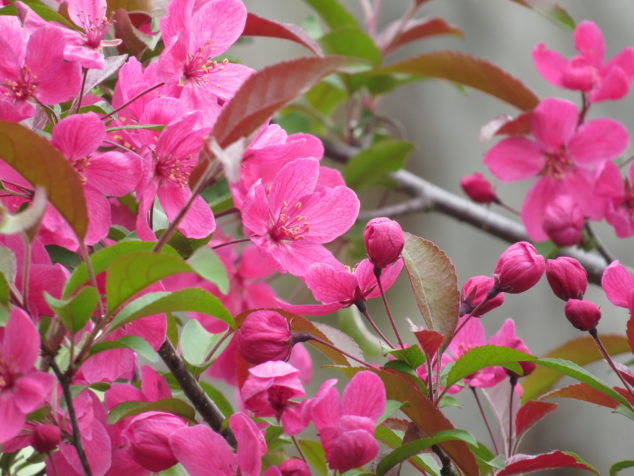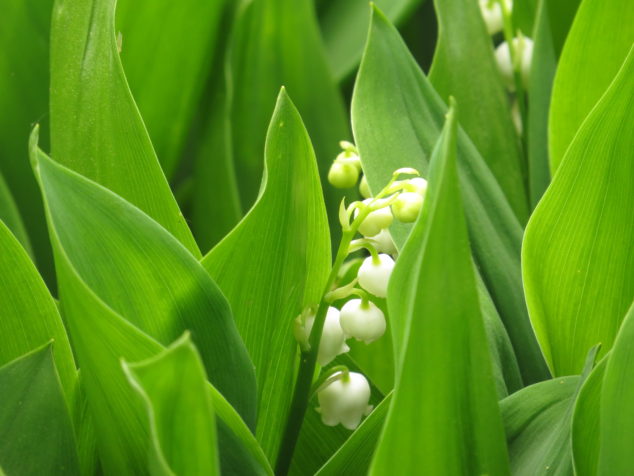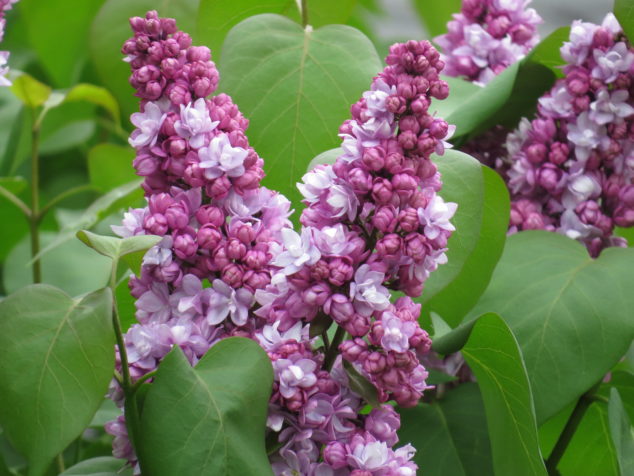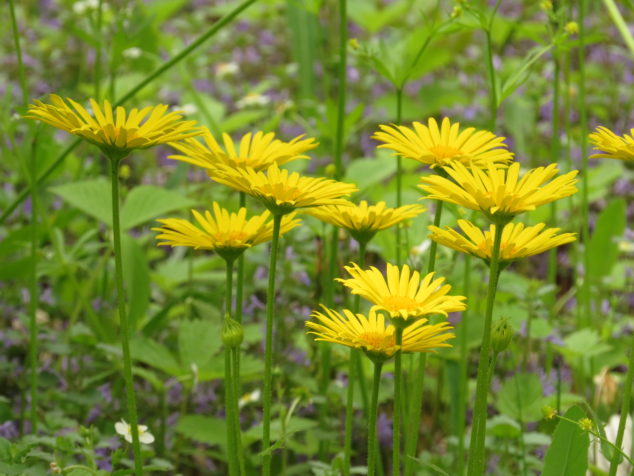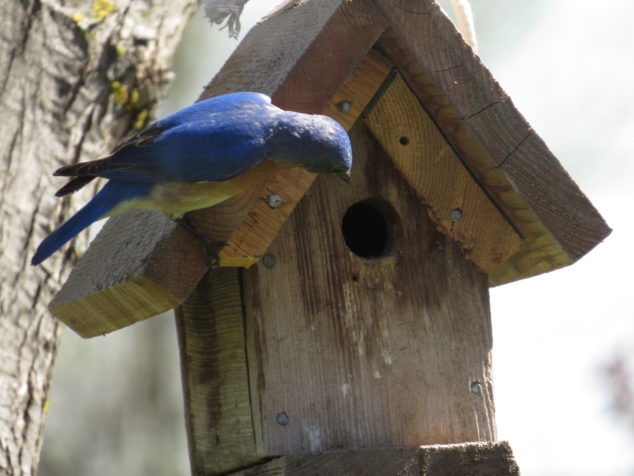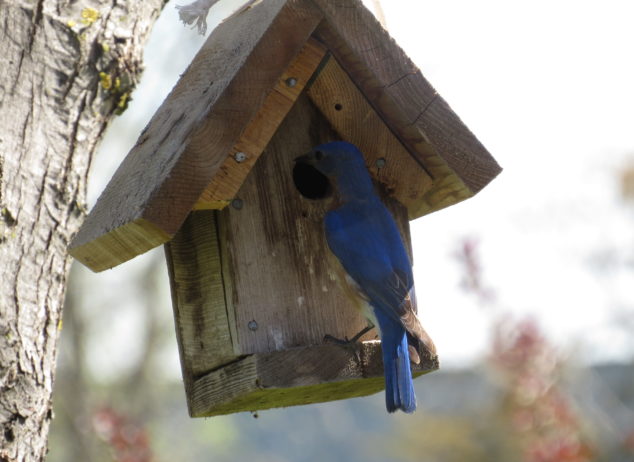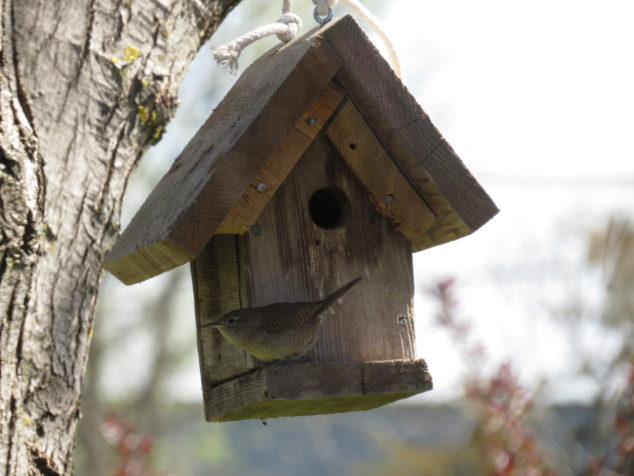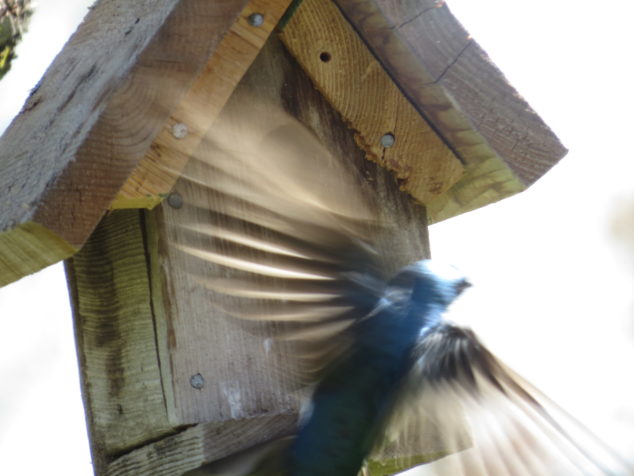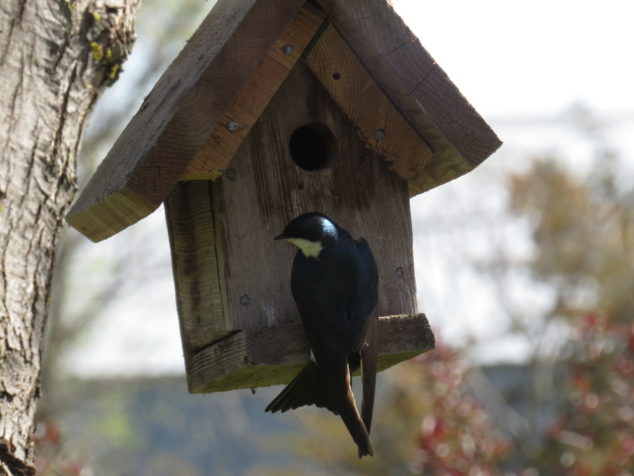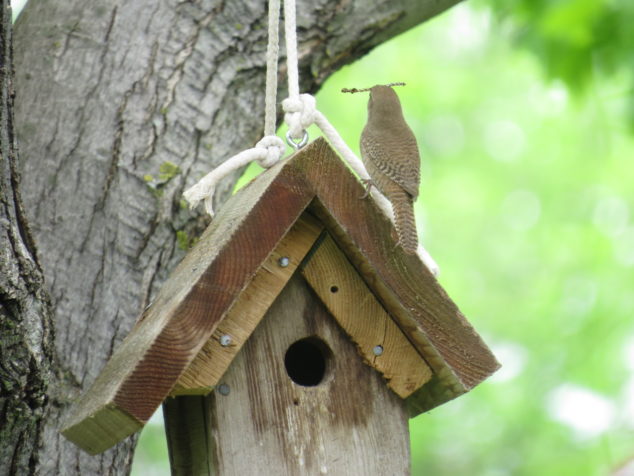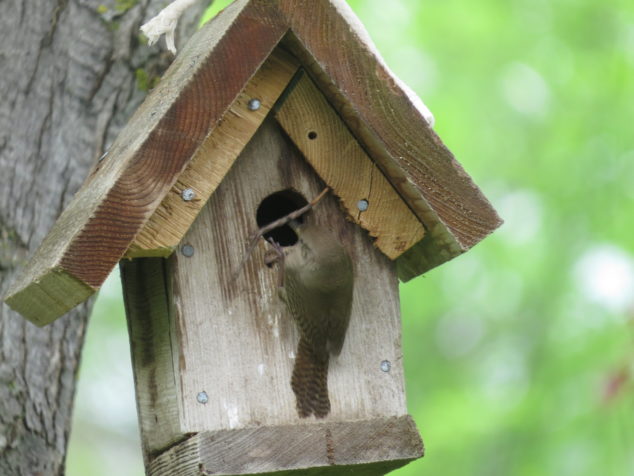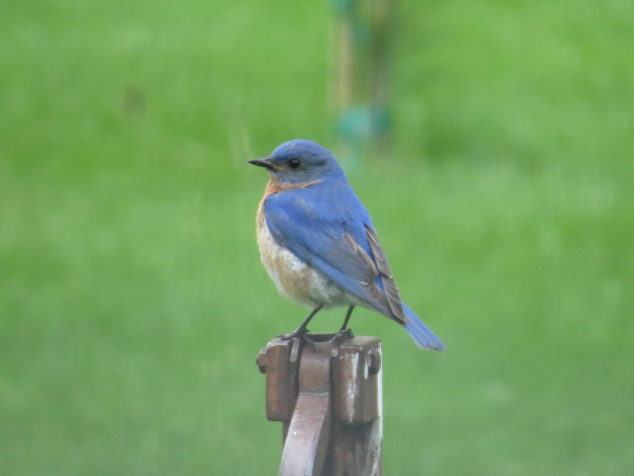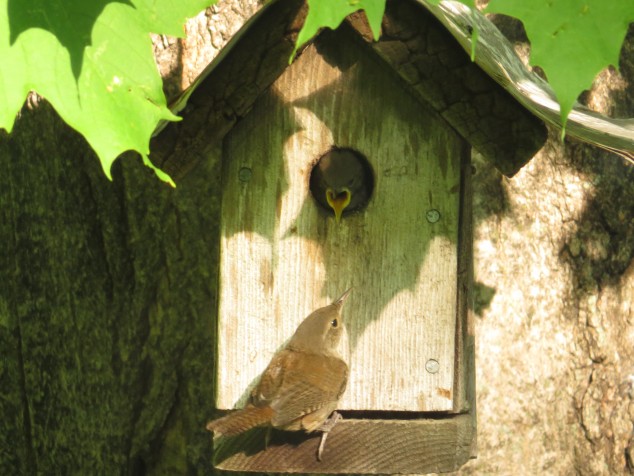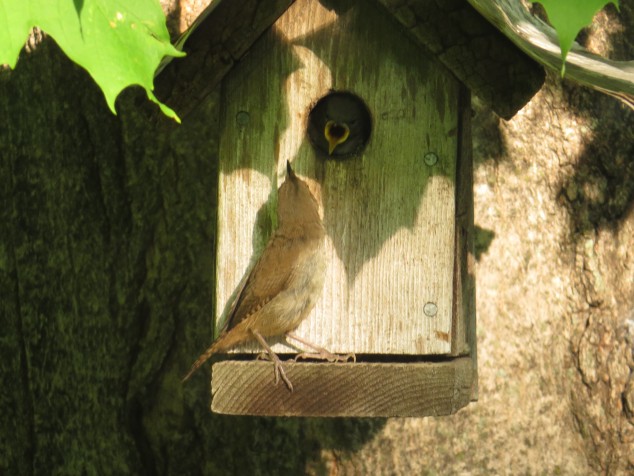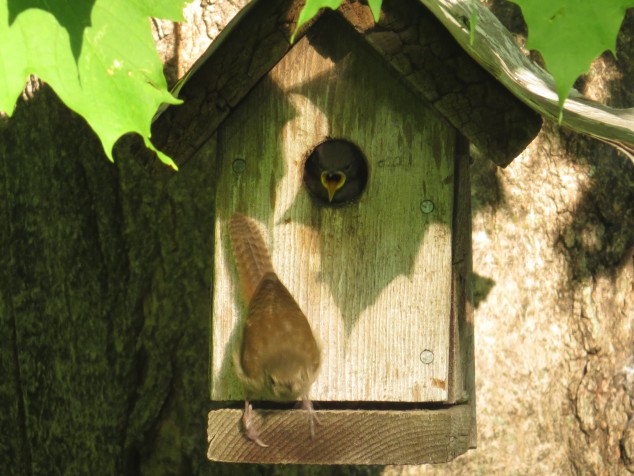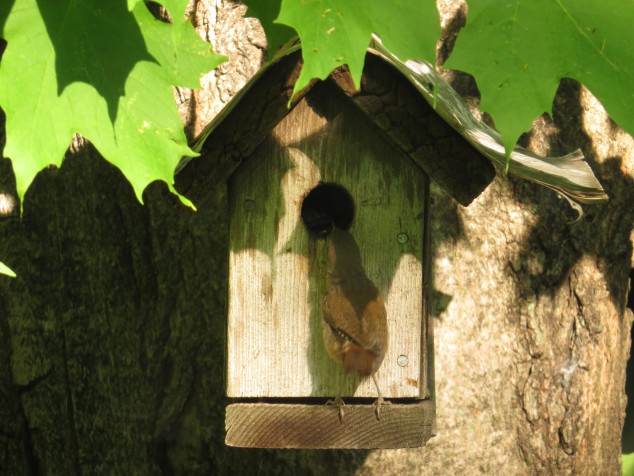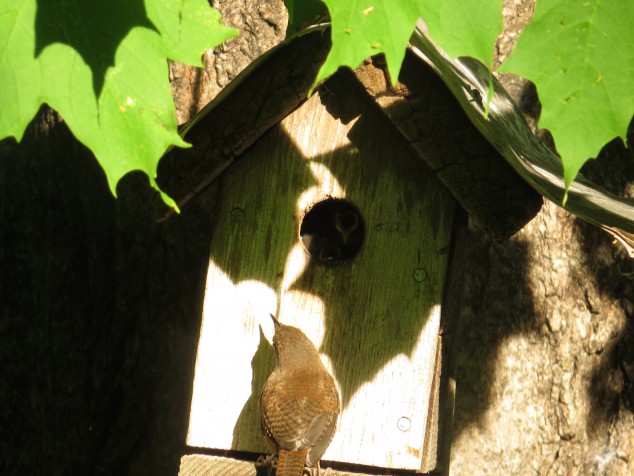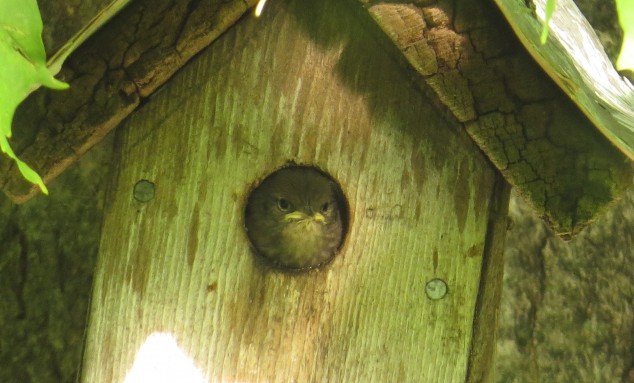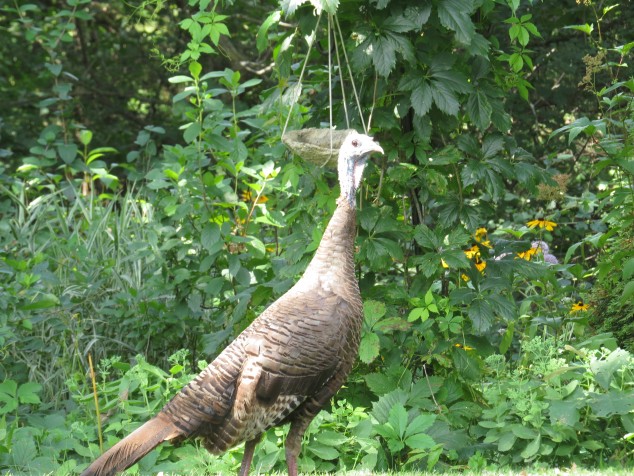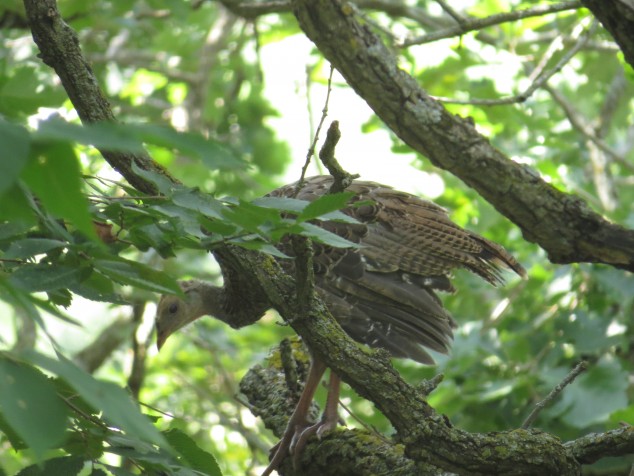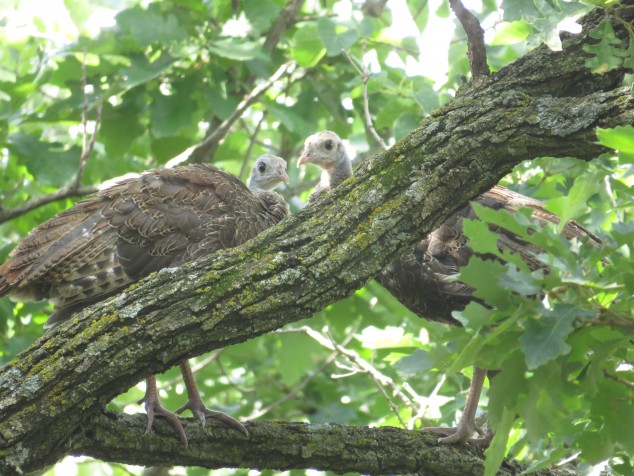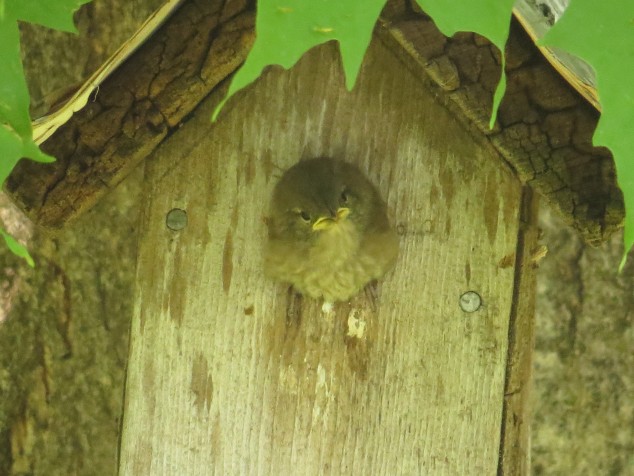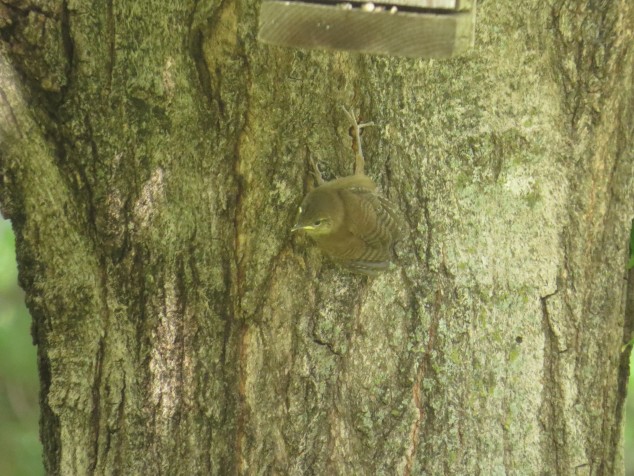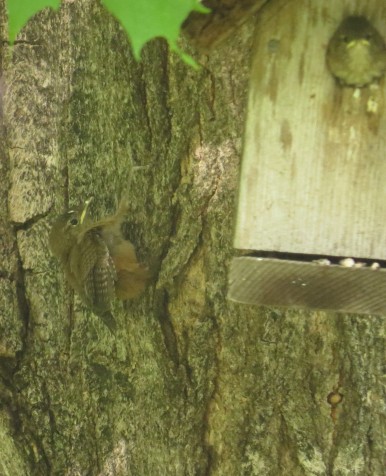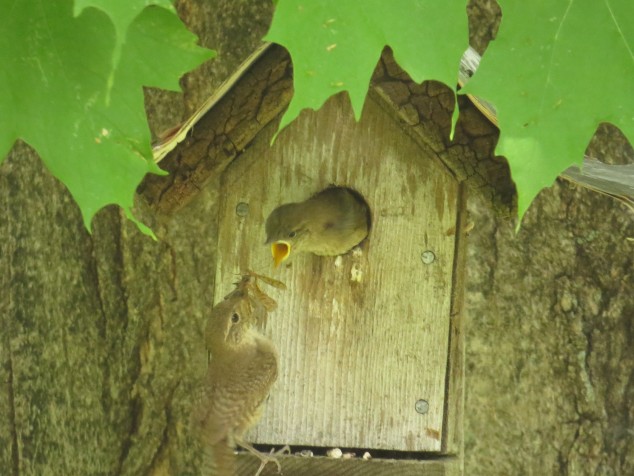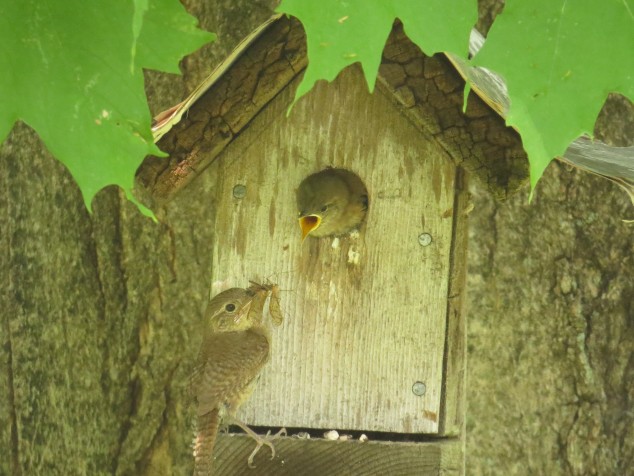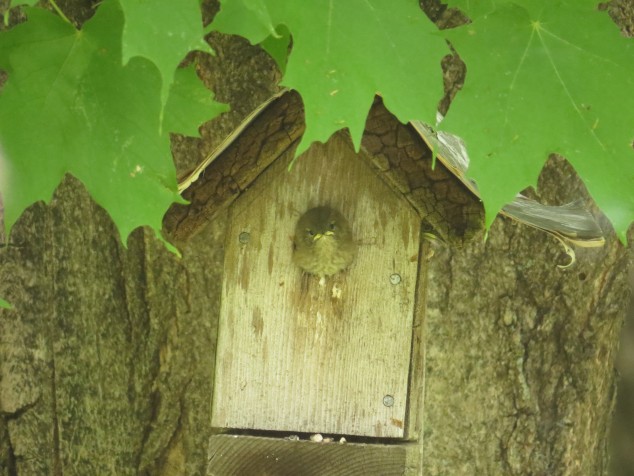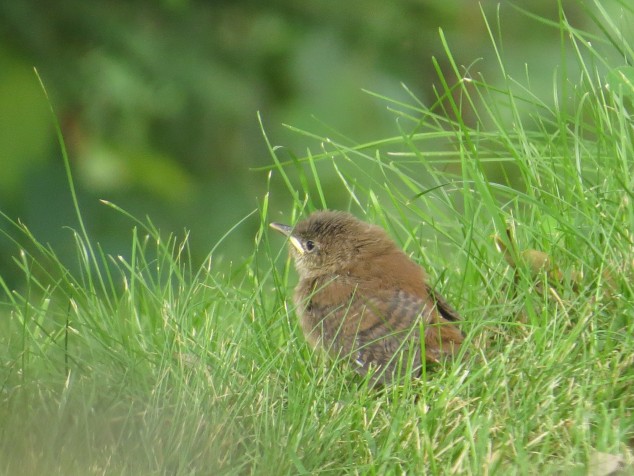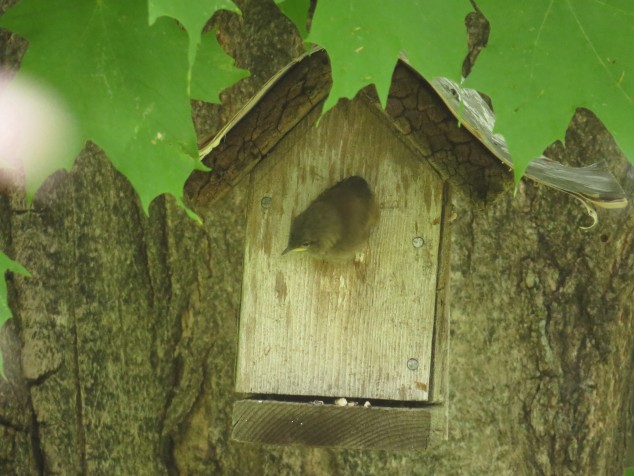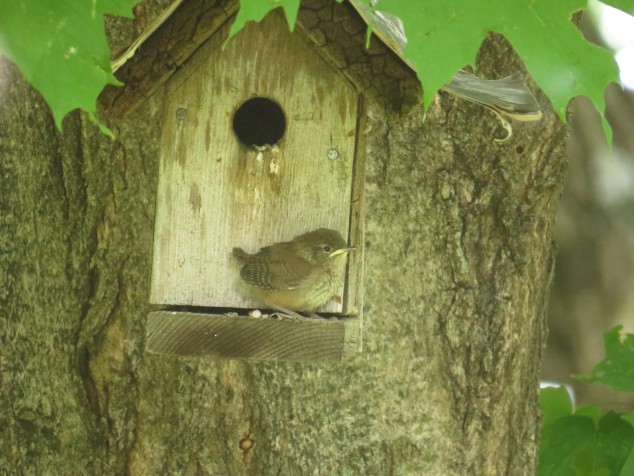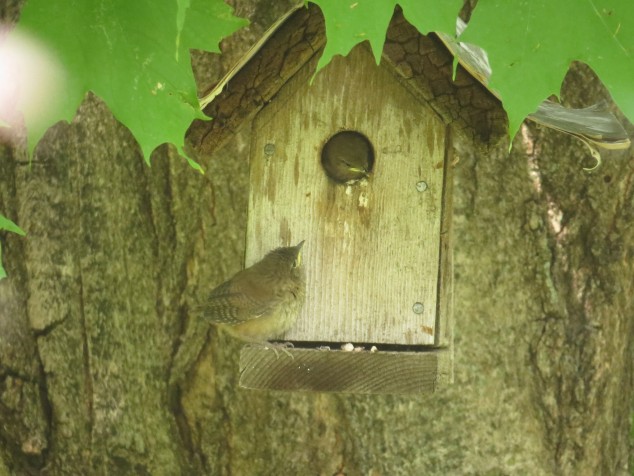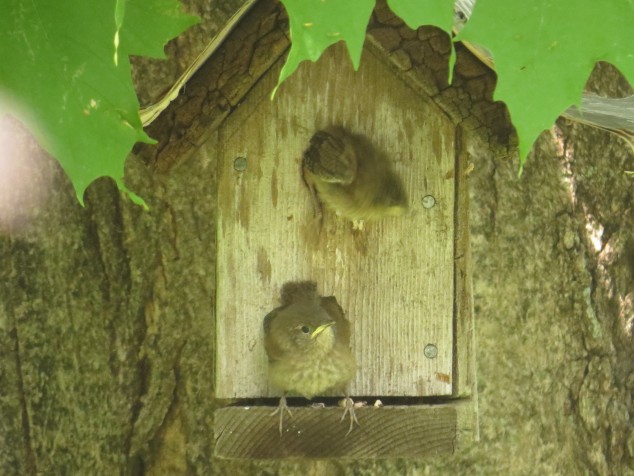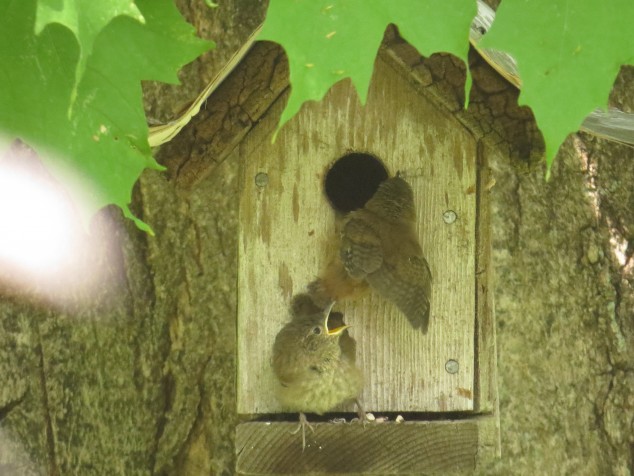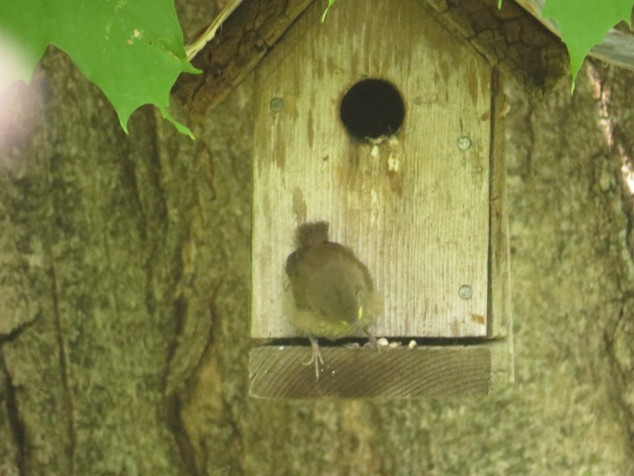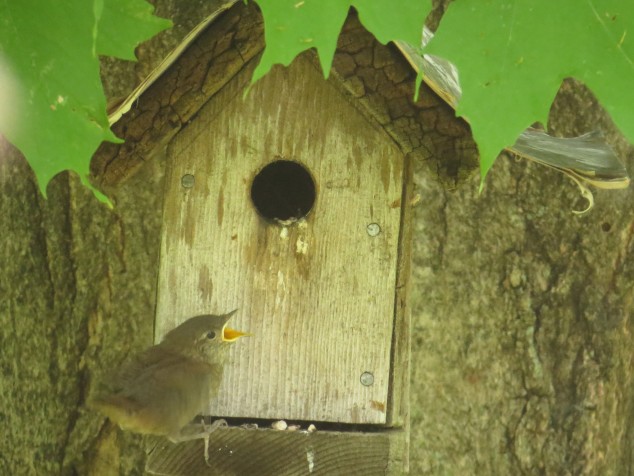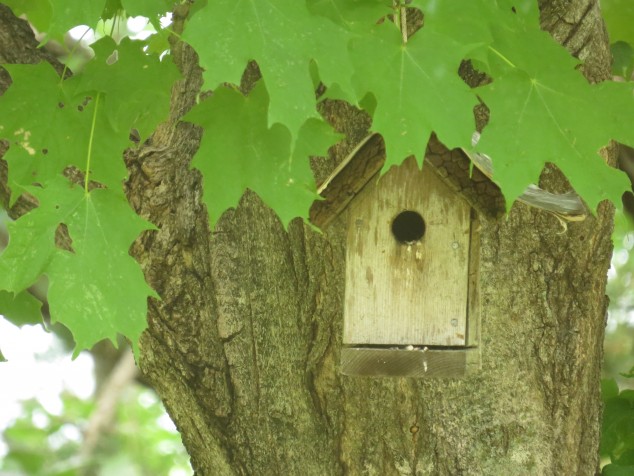I love this time of year! After a bare, white and gray winter, the greenness seems amazing to my eyes. From one year to the next I forget how many of our flowers bloom in May. The colors, shapes, and fragrances are delightful to the senses. This location we call home suits us well right now amidst the trees, among the flowers, and along with the wild creatures.
In a bird’s world, our yard and woods are a pretty good location to set up house, also. There are eight pre-made houses to choose from, trees of all sorts in which to build a nest, a river nearby and various bird baths for water and bathing, and an endless supply of insects, seeds, and nesting material. Unfortunately, in the bird real estate business, we have a tenacious bully. The House Wren is an aggressive competitor for nests and will destroy eggs and young of other birds in order to take over that nesting spot. Wrens are tiny birds, about five inches from head to tail, weighing only as much as two quarters. Their exuberant, gurgling song is loud and persistent. The Wrens show up a couple of weeks after the Bluebirds, who have already staked out the location that suits them best. Wrens are the main source of nest failure in some areas for Bluebirds, Tree Swallows and Chickadees, but we witnessed some bold resistance to the real estate bully. One of the wren houses hangs from the maple tree outside our dining room, and we happened to see a flurry of bird activity around the little house. A male Bluebird chased the Wren into the house, then perched on the roof, seemingly daring him to come out again.
Then he even peered into the house.
Eventually the Bluebird left to attend to his own nest, and the Wren cautiously popped out of the house onto the ‘porch.’
A minute later, another flurry of wings–this time from a Tree Swallow defending its nest from the scalawag.
The male Wren will find a number of nesting spots and add twigs to them when he first stakes out his territory; later the courted female will inspect the nesting spots. With all the negative reinforcement to stealing the others’ nests, the Wrens decided to build their nest in their hide-away place. Both busy Wrens gathered twigs to add to the nest.
The ground below the house is scattered with small sticks that didn’t quite make it to the inside.
One of the most interesting nest-building practices of the House Wren is adding a spider egg sac to the final nesting materials. It is speculated that after hatching, the young spiders eat any mites or parasites that tend to invade the nest when the young birds inhabit it. Once the Wrens lay their eggs, the real estate battle abruptly ends; meanwhile, the Bluebird stands watch.
I’ve lived in a number of locations in four different states during my life so far. Two of those states are birthplaces—mine and Chris’ and the kids’, which make them inherently special. Each place also has a unique culture—Scandinavian, Pennsylvania Dutch, crossroads of America diversity, and German Catholic. Each location has a beautiful ecosystem—prairie, foothills, rolling farm country, and lakes and woods. Truthfully, I have loved them all. Sometimes it’s not so much living in a place that suits us well but rather to become who we are supposed to be. And places, cultures, ecosystems, and the people we meet there help us to do that. We learn to attend to our own nests, to defend the things we hold dear, to stand up to bullies, and to watch over this beautiful, green Earth.
